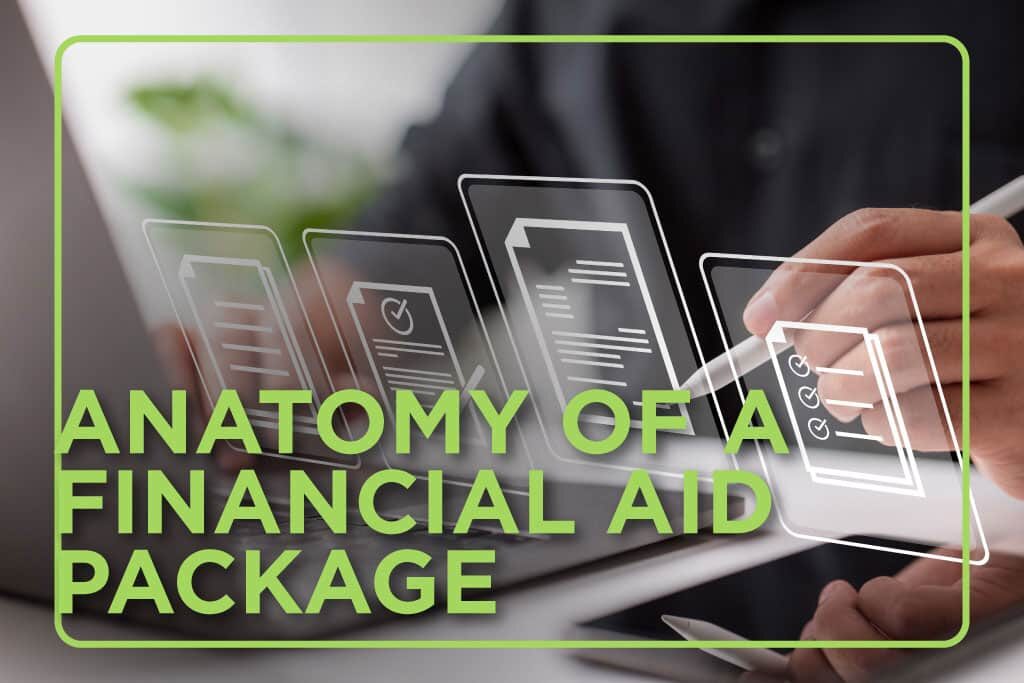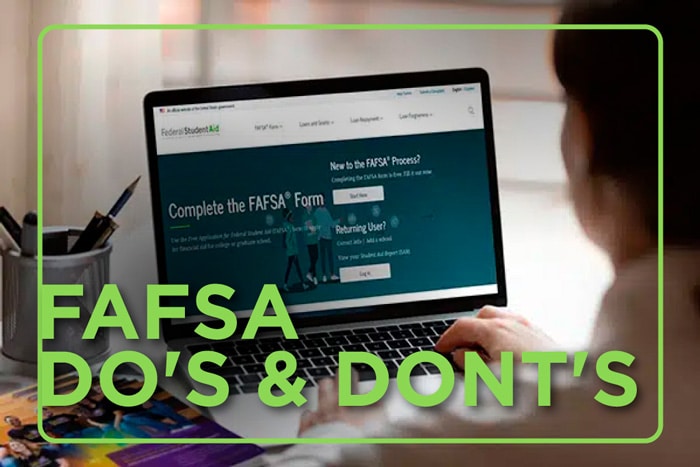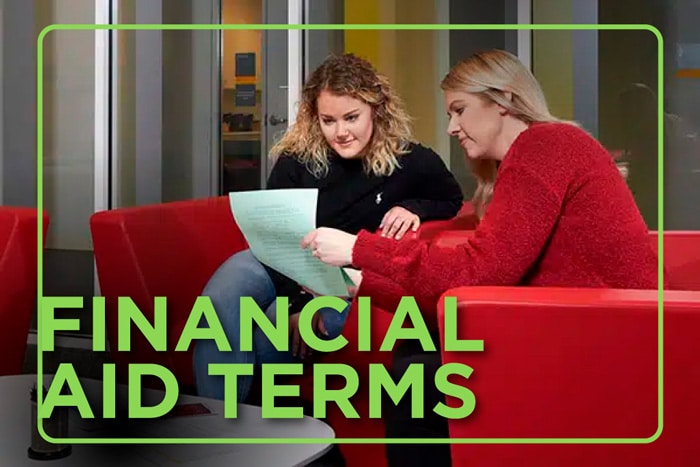
Anatomy of a Financial Aid Package: Understanding College Costs and Aid
Congratulations! You’ve been accepted to the college(s) of your choice! Understanding the anatomy of your financial aid package is an important step as you make your final decision.
Follow along as we break down each section of a financial aid package—from scholarships and loans to direct and indirect costs—so you know exactly what’s covered and what balance remains.
Direct Costs
Direct costs are paid directly to the school you will be attending and will include the costs of things such as tuition, fees, food and housing.
| Financial Aid Type | Description |
|---|---|
| Tuition | The cost you pay directly to the college for instruction and enrollment in courses. |
| Fees | This covers a range of essential student services not included in tuition, such as student activities, and technology and lab costs. |
| Housing | The cost of on-campus living arrangements, such as dorms or university-managed apartments. |
| Food | The cost of meal plans or dining services provided by the university, typically covering a certain number of meals and administrative expenses like dining utilities, maintenance and services. |
| Parking | The cost of a permit or fees for using designated campus parking facilities. |
| Total Direct Costs | The total of all the above categories |
Indirect CostS
Indirect costs are expenses like transportation, books and supplies that contribute to your overall college experience but are paid separately from tuition and fees. While these costs aren’t billed by the school, financial aid options—such as loans—can still be used to help cover them.
| Financial Aid Type | Description |
|---|---|
| Books/Supplies | The cost of textbooks, course materials and other essentials needed for your classes, which are purchased separately from tuition. |
| Personal/Miscellaneous | These costs include everyday expenses such as toiletries, clothing, entertainment and other personal items not directly related to your academic experience. |
| Transportation | These costs cover personal travel, whether commuting to campus or returning home during breaks, including expenses like gas, public transit or airfare. |
| Loan Fees | These are the charges associated with borrowing federal student loans, sometimes called origination fees, which are deducted from the loan amount before funds are disbursed to your student account. |
| Total Indirect Costs | The total of all the above categories |
Grants and Scholarships
Grants and scholarships are forms of financial aid that do not need to be repaid. Grants are typically based on financial need, while scholarships are often offered for academic achievement or other specific criteria.
| Financial Aid Type | Description |
|---|---|
| Merit-Based Scholarship | A financial aid offer given to students based on their academic achievements or other accomplishments; institutional aid sometimes referred to differently at various universities. |
| Need-Based Aid | A financial aid offer provided to students based on their financial situation. This aid is typically determined by the FAFSA to help cover educational costs. |
| Federal Pell Grant | A need-based form of financial aid that helps undergraduate students pay for college and doesn’t need to be repaid. |
| Federal SEOG Grant | A Federal Supplemental Educational Opportunity Grant (SEOG) is a need-based financial aid option for undergraduate students with exceptional financial need. It’s awarded on a first-come, first-serve basis and doesn’t need to be repaid. |
| Total Scholarships and Grant(s) | The total of all the above categories |
Student Loans
A student loan is a type of financial aid that helps students pay for education-related expenses, such as tuition, fees and living costs. Unlike grants or scholarships, student loans must be repaid, usually with interest, after the student graduates or leaves school. There are federal loans, which often offer lower interest rates and flexible repayment options, and private loans, which are provided by banks or other lenders.
| Financial Aid Type | Description |
|---|---|
| Health Professions Student Loan | A low-interest, need-based federal loan for students pursuing health-related fields. Payments are deferred while in school, and repayment starts one year after graduation. |
| Direct Subsidized Loan | A need-based federal loan where the government pays the interest while you’re in school and during deferment periods. Repayment starts six months after leaving school. |
| Direct Unsubsidized Loan | A federal student loan where interest starts accruing immediately, even while you’re in school. Repayment begins six months after leaving school. |
| Other Loans | Additional financing options to support educational costs, typically with varying terms and eligibility requirements. |
| Total Loans | The total of all the above categories |
Work Study
Work-study is a federal program that provides part-time jobs for undergraduate and graduate students with financial need, allowing them to earn money to help pay for education expenses. The jobs are often on-campus or related to the student’s field of study. Federal work-study varies by school, but eligible students might earn between $1,500 to $4,000 annually.
Out of Pocket Expenses
Total out of pockets expenses will be your total direct costs minus any grants, scholarships, student loans or other forms of aid. This does NOT include total indirect costs.
| Total Direct Costs |
| – Grants and Scholarships |
| – Student Loans |
| = Total Out of Pocket Expense |
While scholarships and grants are applied to direct costs first, any remaining funds may be used for indirect expenses. Student loans, both federal and private, can also be used to cover indirect costs. Additionally, work-study programs may help offset these costs.
Bringing It All Together
Understanding the anatomy of your financial aid package is essential as you make your final college decision. By breaking down direct and indirect costs, scholarships, grants, loans and work-study, you can see how the parts come together to create the full picture of your financial aid. To stay informed and proactive, check with your institution’s Office of Financial Aid for specific guidelines on how financial aid can be applied to ensure you’re ready for this exciting next step!


